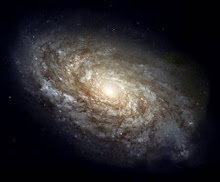A: Stars are very far away—so far that they appear as mere points of light even through the most powerful telescopes, so we normally can't see their surfaces. However, star images actually aren't points, but instead are very tiny disks.
The measurement of light interference is called interferometry, and in recent years astronomers have further developed this science to make crude images of the surfaces of a few stars. Betelgeuse, a bright star in the constellation Orion, is the most famous star for which we have an image of the surface.
This image is possible because Betelgeuse has one of the largest angular diameters of any star. We can see that Betelgeuse has two large, bright spots on its surface. The sun has spots, and astronomers have much evidence that suggests such spots are common on stars, so it isn't surprising that Betelgeuse has spots too.
Find out more about how scientists measure and observe the surfaces of stars, as creation astronomer Dr. Danny Faulkner explains. Clocking humans: Tinkering with the molecular clock: which assumptions should we accept?
Of apes and men: A prominent primatologist has shared with the world his answer to the question, "Where did morality come from?"
Dinosaur embryology: Jurassic embryos suggest rapid growth of sauropod embryos.
Eco-evolutionary rescue: Rapidly occurring "hard-wired evolutionary changes" said to offer game-changing insights for wildlife management.
Global warming questioned:
The Daily Mail,
Der Spiegel, the
Telegraph, and the
Economist have all reported in recent weeks that our collective goose is not cooking as precipitously as predicted.

No comments:
Post a Comment